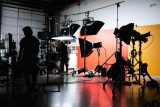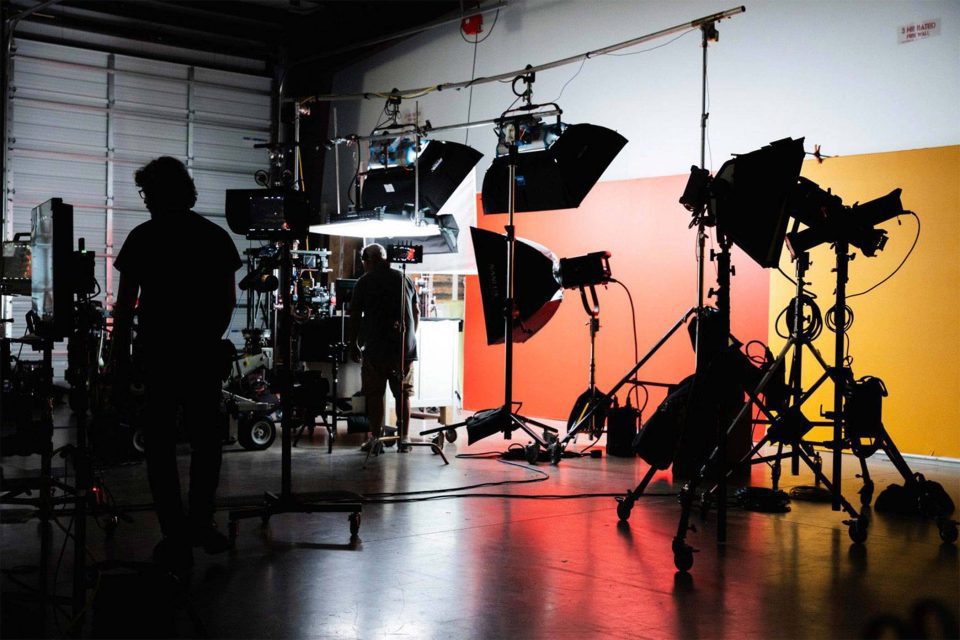Why You Need Art Direction for Your Next Photography or Video Production
Commercial Photography Insights
6 days ago
There are an inordinate number of moving pieces when executing a photography or video shoot, all of which need to seamlessly come together during a finite window of time. Successfully pulling it off requires everyone involved to follow a singular vision that’s set by the photo art director long before the shoot. In this article, we’ll consider the importance of art direction for photography and videography and answer several frequently asked questions, including:
- What is art direction in photography?
- What are the basics of art direction?
- What is an example of art direction?
- How does an art director communicate the vision?
- What does an art director do at a photoshoot?
- What are the advantages of incorporating art direction into a project?
Understanding Art Direction in Photography & Videography
Art directors are the visionaries behind the visual aspects of photography and video projects. They orchestrate every detail to convey a compelling narrative, evoke specific emotions, and communicate a desired message or story. Through careful planning, coordination, and creative vision, art direction shapes every aspect of the production process, from pre-production to post-production. Art direction elevates the quality and impact of photography and videography, resulting in stunning and memorable content.
At Salt Paper, key aspects of photo and video art direction include:
- Conceptualizing the artistic direction and visual style of the project.
- Collaborating with clients, photographers, videographers, and project managers on goals and objectives.
- Directing set design, styling, and props to create a cohesive visual narrative.
- Providing guidance on lighting, composition, and framing to achieve a particular mood and atmosphere.
- Overseeing post-production processes, including editing and color grading, to maintain consistency with the artistic vision.
- Continuously evaluating and refining visual elements to ensure alignment with project objectives and brand identity.


The Impact of Art Direction on Visual Storytelling
In a nutshell, art direction serves as our guiding force behind the storytelling aspect of photography and video production, elevating visual narratives that inspire emotions and instill messages.
Through strategic ideation and meticulous planning, art directors craft immersive environments. They guide the selection of props, set design, styling, lighting, composition, and framing. No detail is too small. Color schemes, textures, and visual motifs convey thematic elements and symbolism. Sequencing, pacing, and visual metaphors engage targeted viewers on a deeper level. Every facet is meticulously calculated to reinforce the overarching narrative, bolster character development, support the integrity of the story, and enhance brand identity.
By creating visually striking and memorable imagery, art direction leaves a lasting impression on viewers, fostering deeper connections to the content, the product or service, and, ultimately, the brand.
Practical Applications of Art Direction
Let’s look at a real-world example of art direction from the realm of fashion photography. Long before the lifestyle photography shoot, the art director collaborates with the photographer and stylist to develop a mood board that outlines the visual direction. A mood board may include images that inspire the desired atmosphere, color palette, and styling references. For instance, if the goal is to evoke a sense of vintage glamor, the mood board might feature imagery from iconic fashion eras such as the 1920s or 1950s.
Once the mood board is established, the art director works closely with the stylist to select wardrobe pieces and accessories that align with the envisioned aesthetic and the proposed shot list. A shot list is a document that details the specific photographs or scenes that should be captured during the photo or video shoot. For our fashion shoot scenario, then, the stylist may source garments and accessories from specific designers or vintage boutiques. Additionally, the art director oversees hair and makeup styling, ensuring that the overall appearance of the models complements the theme and will suit for the prescribed shot list.
Diligent attention is paid to every detail of the set composition, from the positioning of the models to the selection of props, set design elements, and location. For example, if the shoot aims to evoke a sense of luxury and sophistication, the art director may incorporate opulent props such as ornate furniture, fine china, or luxurious textiles. These props not only enhance the visual appeal of the images but also contribute to the narrative by reinforcing the mood or theme.
Throughout the entire process, effective communication and collaboration among the creative and project management teams is paramount. By fostering an environment of open dialogue and mutual respect, the art director ensures that everyone is aligned with the project’s vision and goals. This collaborative approach allows for the seamless integration of individual talents and expertise, resulting in a cohesive and visually compelling final product that resonates with the intended audience.
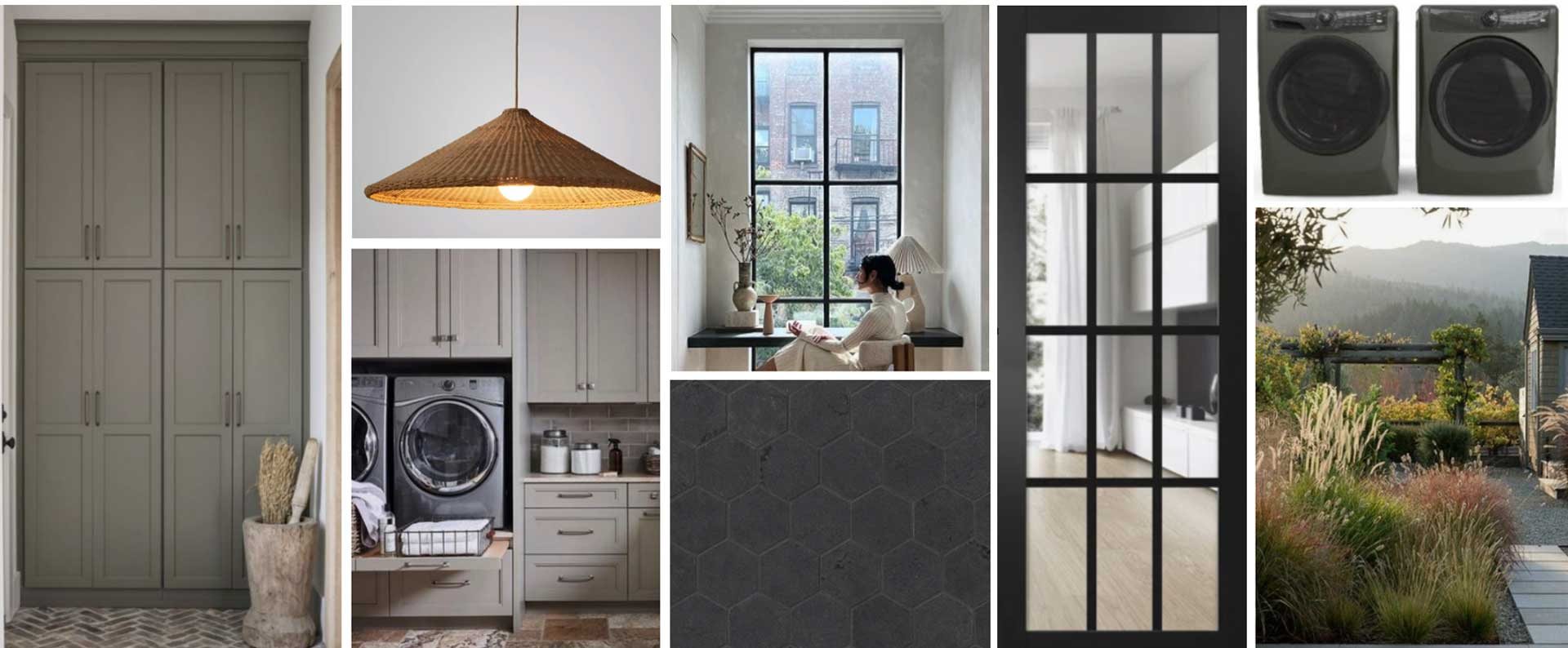
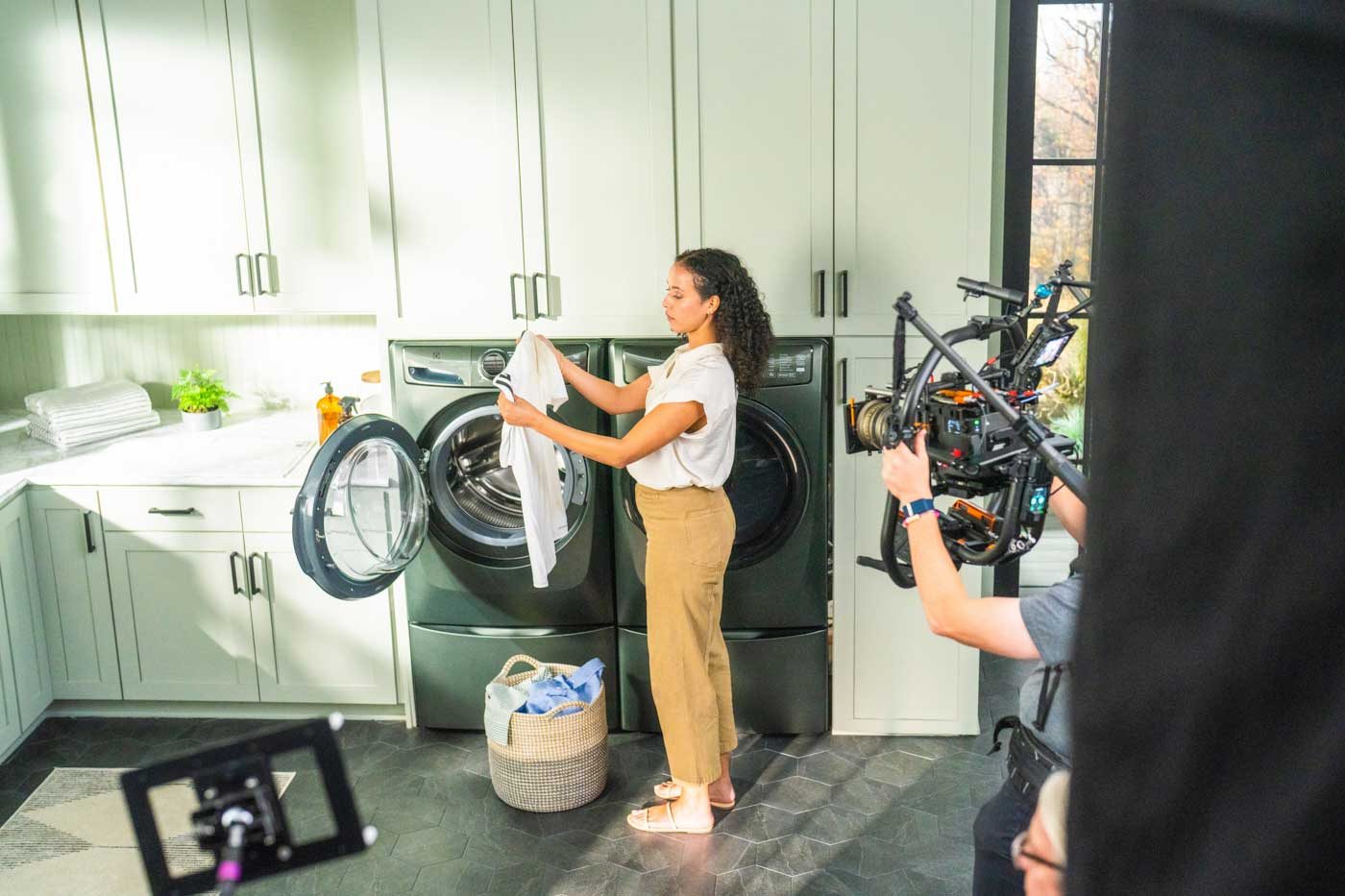
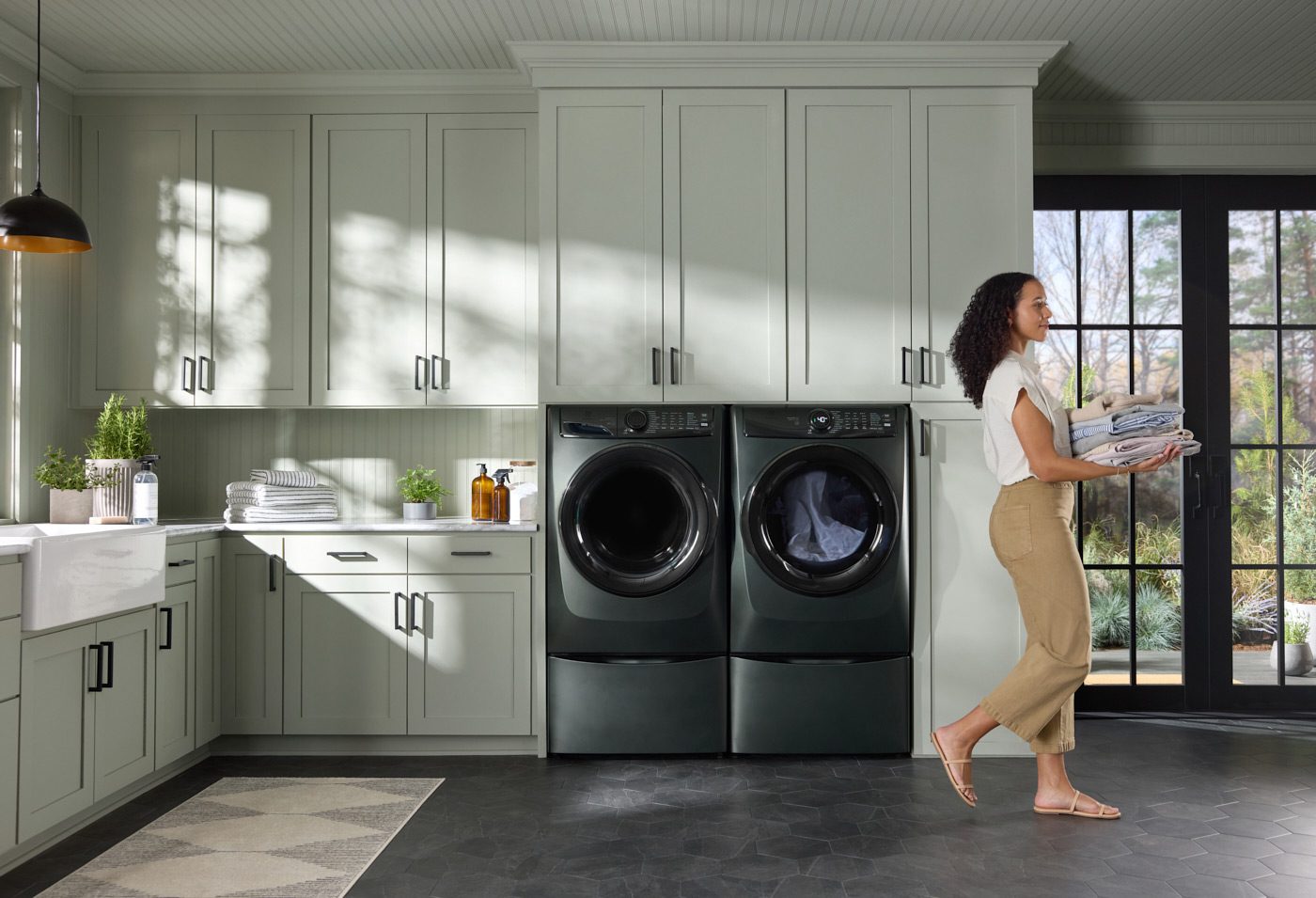
Art Directed Mockups: Bringing Ideas to Life
An art directed mockup is a visual prototype or rough draft of the final photography or video project, providing a tangible representation of the intended aesthetic and creative direction. These are crafted to convey the predetermined look and feel of the project, incorporating elements such as typography, layout, color schemes, and imagery.
One of the primary benefits of art directed mockups is that they enable the creative team to experiment with different design choices, explore various visual concepts, and refine ideas before committing to the production phase. Designers and art directors can use mockups to test different visual approaches, assess their effectiveness in conveying the intended message or story, and make informed decisions about which direction to pursue. This iterative process enables us to finesse ideas, address any potential issues or inconsistencies, and produce stronger, more polished visuals.
Art directed mockups also serve as a valuable communication tool, helping us to align stakeholders and collaborators on the project’s vision and objectives. By presenting mockups to our clients, team members, or other stakeholders, we can solicit feedback, gather input, and ensure that everyone involved is on the same page before we move forward with production. This collaborative approach fosters a shared understanding of the project’s goals and expectations, minimizes misunderstandings or misinterpretations, and ultimately leads to more successful outcomes.

Mood Boards vs Mockups
We use the terms “mood board” and “mockup” a lot, which can get confusing to clients, so let’s do a quick comparison to keep the distinction clear:
| Mood Boards | Mockups |
| Collage of images, textures, colors, and typography. | Visual representations or prototypes of design concepts; more detailed and specific than mood boards. |
| Used in the early stages of a project to explore and communicate the visual direction. | Used to showcase how the final product will look and feel, including layout, typography, color schemes, and imagery. |
| Provides inspiration and sets the tone for the project. | Allows for experimentation and refinement of design elements before final production. |
| Helps stakeholders understand the intended look and feel without focusing on details. | Provides a more concrete vision of the project, including specific design choices and details. |
| Often created using digital or physical methods and may include photos, illustrations, fabric swatches, and typography samples. | Can be created digitally using design software. |
Executed Art Direction: Photography or Video Shoot
Ahead of the photo or video shoot, all people on set or location will receive a detailed creative deck – sometimes called a photography brief or shoot brief – that includes salient details and production logistics. This includes everything from the location address and parking info to a concise statement of the project vision and goals and aspects of the mood board.
On shoot day, all of the art director’s research and collaborative planning comes to fruition when the many moving pieces come together to realize the creative vision. During the shoot, the art director is charged with ensuring every image or scene on the shot list is captured in the right size and format:
- Execution Oversight: Direct the final selection of props, set design, styling, and lighting techniques to ensure alignment with the creative vision and objectives.
- Coordination: Work closely with photographers, stylists, makeup artists, and others to coordinate efforts and ensure everyone is aligned with the vision.
- Supportive Leadership: Foster a collaborative and supportive environment that encourages creativity, innovation, and effective communication among team members.
- Feedback & Guidance: Provide constructive feedback and guidance to team members and talent to empower contributions of their expertise.
- Client Communication: Serve as a liaison between the client and creative team, providing updates, soliciting feedback, and ensuring client satisfaction with the final outcome.
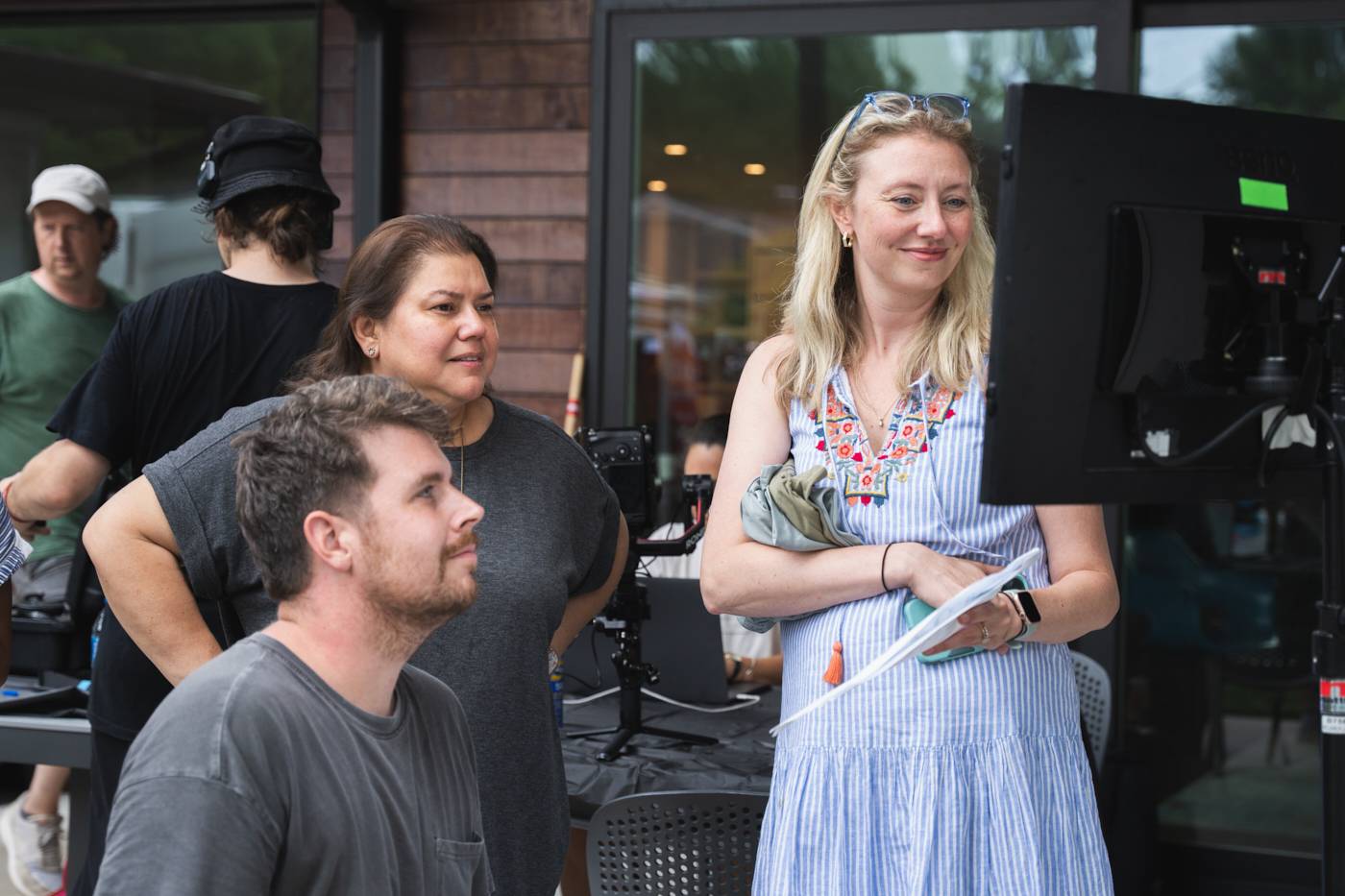
Advantages of Incorporating Art Direction
A skilled art director brings a keen eye for detail, creativity, and a deep understanding of design principles to the project, ensuring that every element enhances the storytelling potential, elevates brand identity, and captivates the audience. In addition to the creative piece, efficiency and productivity are major benefits to incorporating professional art direction. Photography and videography shoots can be costly in terms of time and resources. Clear artistic vision and significant pre-planning unifies team members, streamlines decision-making, aids in problem-solving, and empowers creatives to focus on their craft. Art direction is a valuable investment in the quality, effectiveness, and longevity of visual content.
- Enhanced Visual Cohesion: Professional art direction ensures all visual elements are harmoniously aligned with the theme, enhancing the overall aesthetic appeal. Without a guiding hand, there is potential for a lack of visual harmony, resulting in a disjointed look.
- Stronger Narrative: Art direction helps to clearly convey the story or message, making it more engaging and relevant to the target audience. There is a risk of muddy messaging without expert strategic planning.
- Improved Efficiency: By having a clear artistic vision, decisions are made faster and more effectively, reducing time spent on trial and error. Lack of direction often leads to longer shoot times and increased costs due to inefficiency and indecision.
- Higher Production Value: Professional art direction can elevate the quality of the shoot, making the final images look more polished and high-end. Without expert input, the shoot might fail to meet professional standards, affecting the overall quality and impact of the images.
- Creative Problem Solving: Art directors bring creative solutions to the table, which can be crucial in overcoming logistical or technical challenges during the shoot. Without an art director, a shoot might miss out on innovative approaches and creative ideas that could significantly improve the outcome.
Art Direction at Salt Paper
The art direction team at Salt Paper is second-to-none. We start the creative process from a point of execution by asking: what are we capable of? It’s our favorite question because finding the answer in the context of a new project allows us to stretch and push ourselves to dream, challenge, and innovate. We harness our collective passion and expertise and delight our clients – it’s the most fulfilling experience of all.
Want to set your campaign apart by leveraging our understanding of commercial photography, videography, and production? Connect with us! We can’t wait to work together.
